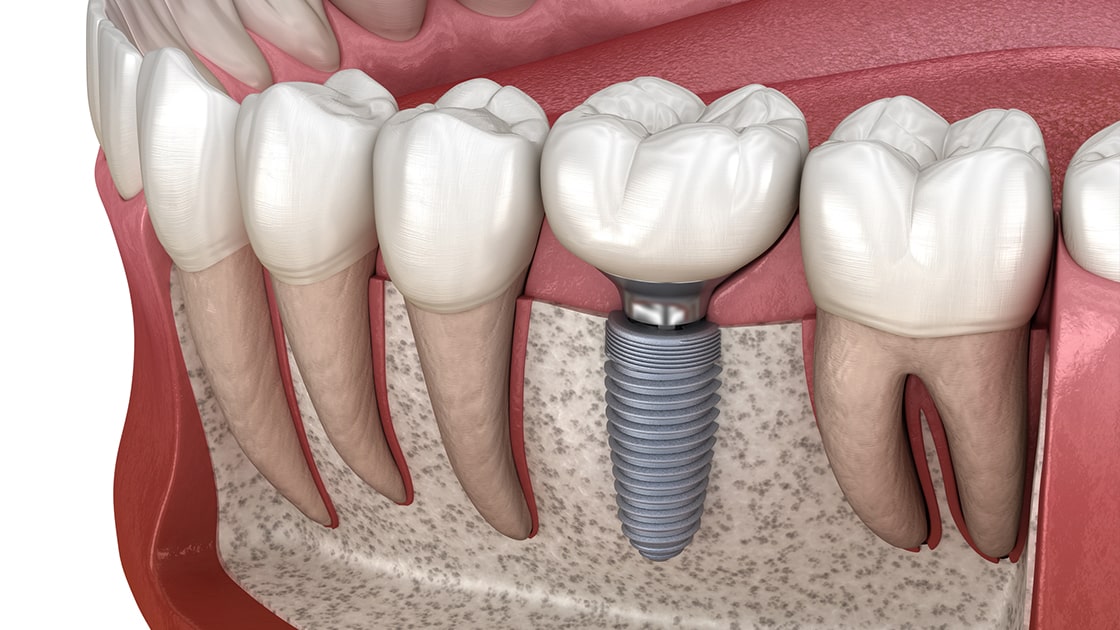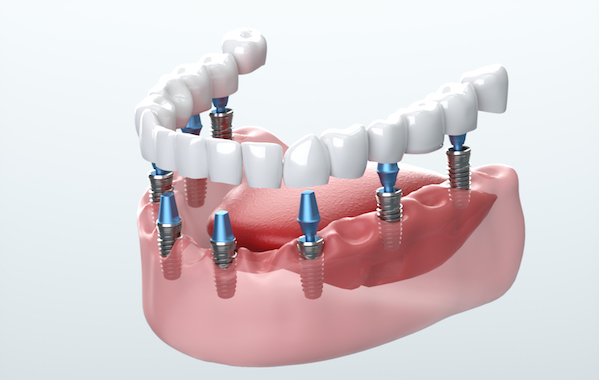Dental Implant Dentures Grand Rapids MI - Dental Implants - Tooth Replacement
Dental Implants Near Me Jenison MI - What are dental Implants? Types, procedures, and more
The journey towards dental implants begins with a thorough assessment of the jawbone's condition. When there's insufficient bone density to support an implant, bone visit homepage grafting becomes a crucial procedure to recreate a stable basis. Understanding how a lot bone grafting is needed helpful hints for dental implants tremendously influences the therapy plan, timeline, and general success rate.
The amount of bone grafting required depends on a quantity of factors, together with the extent of bone loss, the implant's measurement, and the specific location within the mouth. In cases of significant bone loss as a result of periodontal diseases, trauma, or extended tooth loss, more intensive grafting may be needed. Conversely, if the bone loss is minimal, a smaller graft may suffice.
Dental Tooth Implant Grandville MI - Dental Implants: Surgery, Advantages, Risks, & Insurance
The analysis course of typically entails imaging studies similar to X-rays or 3D scans, permitting the dental professional to visualize the bone structure (Implant Dental Jenison MI). These photographs assist in determining the quality and amount of current bone. If the bone is deemed insufficient, the dentist will then define the suitable grafting procedures
Grafting could be sourced from various areas. Autografts, which involve harvesting bone from the affected person's own body, are often deemed the gold normal. These provide excellent integration with the prevailing bone but include the drawback of further surgery. Other options include allografts, which use donor bone, and synthetic materials designed to mimic natural bone. Each option has its own implications on healing and success rates.
After figuring out the mandatory quantity of bone grafting, the dental skilled will create a tailored plan for the patient. This plan may embrace the timing of bone grafting in relation to the implant placement. In some instances, a graft can be carried out simultaneously with the implant surgery. Alternatively, in additional sophisticated scenarios, a separate therapeutic interval is indicated.
Healing timelines range primarily based on the individual's health, the extent of grafting, and the type of graft used. Generally, the therapeutic of a bone graft takes several months earlier than an implant could be positioned. During this time, bone regeneration happens, resulting in a steady base for the implant.
Dental Implants Whole Mouth Jenison MI - Dental Implants Overview
Patients usually marvel in regards to the risks associated with bone grafting. While problems corresponding to infection or graft failure are possible, these events are relatively rare. Adhering to post-operative care instructions and attending follow-up appointments decrease risks and promote healing.
Once the bone has adequately healed, the dentist assesses the graft's success by evaluating the bone density and stability. If everything appears favorable, the next steps toward putting the dental implant can begin. The success of this subsequent step largely hinges on the standard of the bone graft and its integration with the encircling bone.
Cost considerations play an important position within the decision-making process. The expense of bone grafting varies based on materials used, the complexity of the case, and geographic location. It is crucial for patients to debate finances upfront to keep away from sudden bills later within the treatment.
Dental Tooth Implant Grand Haven MI - What are dental Implants? Types, procedures, and more
Also, patients should have realistic expectations concerning the timeline and outcomes. Many factors can affect how a lot bone grafting is required and its total effectiveness. A collaborative method involving the patient and the dental team not solely ensures clarity but also enhances the probabilities of a profitable outcome.

Maintaining good oral hygiene and regular dental visits following the process is important. These practices can prevent issues and ensure that both the graft and the implant stay secure over time. The ongoing relationship with a dental professional is essential, especially within the months following the procedures.
In conclusion, understanding how much bone grafting is needed for dental implants encompasses a multi-faceted approach that considers bone quality, grafting sorts, therapeutic time, and overall affected person health. The stability between reaching the specified aesthetic and practical outcomes while minimizing risks and problems is on the heart of dental implant procedures. The journey could additionally be in depth, however a well-planned strategy maximizes the probabilities for a profitable, long-lasting end in restorative dental work.
- Determining the quantity of bone grafting required for dental implants typically hinges on the preliminary bone density and volume of the affected person's jawbone.
- Each affected person's case is unique; factors similar to earlier extractions, periodontal disease, or trauma can affect the necessity for grafting.
- A 3D imaging scan is often carried out to assess the precise dimensions of the available bone and inform the grafting technique.
- The kind of dental implant placement—immediate or delayed—may dictate the quantity of bone grafting needed for stability and integration.
- Different types of graft materials, similar to autografts, allografts, or artificial choices, can influence how much grafting materials is needed.
- Assessing the patient's overall health, age, and lifestyle habits can affect the healing course of, influencing graft quantity necessities.
- The depth and placement of the implant can necessitate various quantities of graft material to safe optimum outcomes.
- Successful integration of the dental implant usually depends on adequate bone density, leading to a tailored grafting approach for each individual.
- Consultation with an oral surgeon will provide a clearer estimate of the bone grafting needed based mostly on complete evaluations and imaging results.
- Post-grafting therapeutic time varies; thus, a careful evaluation is crucial to determine the final amount of grafting required for successful implantation.undefinedHow much bone grafting is required for dental implants?
Denture Dental Implants Walker MI - Dental Implants Surgical Technique Videos
What is bone grafting and why is it essential for dental implants?undefinedBone grafting is a surgical procedure that adds bone or bone-like material to the jawbone. It is important for dental implants when the present bone is insufficient to help the implant, making certain stability and long-term success.
How do I know if I want a bone graft for dental implants?undefinedYour dentist or oral surgeon will consider your jawbone via x-rays or 3D imaging to find out its density and volume. If they find that you just lack sufficient bone, they may suggest a bone graft earlier than proceeding with the dental implant.
Dental Implant Jenison MI - Dental Implants - Conditions & Treatments
What components influence the amount of bone grafting needed?undefinedFactors embody the size and site of the implant site, the health and density of present bone, and particular person healing capacity (Denture Dental Implants Holland MI). These elements help the dentist decide the appropriate amount of graft materials needed
Are there various sorts of bone grafts used for dental implants?undefinedYes, there are several varieties, including autografts (from your own body), allografts (from a donor), xenografts (from animals), and artificial graft materials. Each type has unique advantages and can be selected primarily based on individual patient needs.
Dental Implant Dentures Norton Shores MI - Dental Implants - Benefits, Types, Cost
How long does the bone grafting process take?undefinedThe period varies based on the complexity of the grafting process and the extent of the realm handled. Generally, a bone grafting procedure can take wherever from 30 minutes to a few hours, relying on the precise circumstances.
What is the recovery time after a bone graft for implants?undefinedRecovery instances can differ, but usually, preliminary therapeutic would possibly take a couple of weeks, whereas full integration of the graft with the bone can take several months. Your dentist will present a personalized timeline based mostly on your state of affairs.

Will I experience pain after the bone grafting procedure?undefinedSome discomfort is common after a bone graft, but it's typically manageable with prescribed pain treatment. Most patients report that pain diminishes significantly inside a few days.
Implants Dental Near Me Grand Rapids MI - Implants Dentistry - Dental Implants
How does bone grafting have an result on the general dental implant timeline?undefinedBone grafting could lengthen the overall timeline for receiving dental implants, as it requires a therapeutic interval earlier than implants could be positioned. This can add a quantity of months to the method but is important for a successful implant placement.

Are there risks related to bone grafting for dental implants?undefinedLike any surgical procedure, bone grafting carries some risks, similar to infection, graft failure, or issues related to anesthesia. However, when carried out by an experienced professional, these risks are usually low.
Can I have dental implants placed immediately after a bone graft?undefinedIn many instances, dental implants can't be placed instantly after a bone graft because of the want for the graft to combine into the existing bone. However, some techniques, like quick loading, might allow for this under specific conditions. Your supplier will advise you on the most suitable choice based in your circumstances.